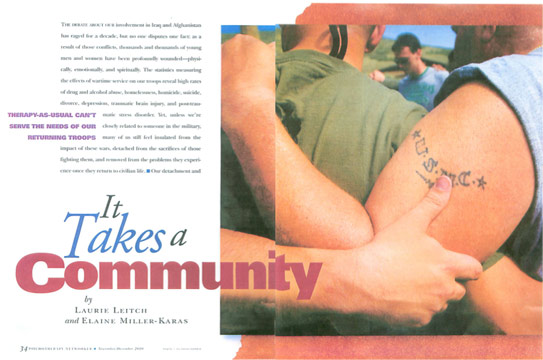We are social creatures. We grow inside another individual and hear the intonation and accents of the people around us before we are even born. We bring our socially-dependent selves into the world where our social world continues to exert a powerful impact on every aspect of our development. The potency of social relationships does not decrease as we grow, move out into the world, and participate in and build organizations and communities. In today’s highly networked, demanding, and even polarized environments, increasing rates of burn-out, secondary traumatization, demoralization, and staff turnover often characterize organizations whose tools to support and amplify the security and health of their staff fail to keep pace with an environment of relentless change and increasing complexity. And, in communities, we observe daily on social media the ways groups are pitted against one another with the corresponding spikes in violence and aggression (hyper-activation) or withdrawal and civic disengagement (hypo-activation) that follow. We are living in a time when a focus on systems-level health and well-being is imperative.
Organizational systems, often characterized by a strong ethic of service and responsibility, face the challenges of dealing directly with hyper and hypo dynamics. Their work has increasingly become politically complex and embedded in high-pressure, under-resourced environments. These circumstances place extraordinary demands on individuals and the systems they live and work in as well as on the policies, practices, and programs that characterize all levels of these systems. We have all seen the result: suboptimal, if not impaired function that exacts a high toll on physical, mental, and spiritual health, including life expectancies that can be as much as twenty years below the national average. It is actually a vicious cycle that is self-reinforcing. Systems-level strains lead to poor individual-level outcomes (i.e., their staff as well as the organization’s constituents) which, in turn, contribute to further organizational impairment.
And, while our SRM individual-level skills help equip staff and community members to harness the capacity for resilience that each of us has, what about the larger ecology in which we are all embedded? How do we address resilience at the larger systems- level?
Organizational Plasticity: How Can We “Re-wire” Organizations?
The term “neuroplasticity” refers to the capacity of our individual human brains to change in response to life’s experiences. This capacity means that each of us always has the opportunity to shape the brains we have. By “Organizational plasticity” I mean the organization’s (community, system) capacity to be adaptable and flexible in the face of complex needs…or not. Plasticity can build on the positive or reinforce the negative. To harness positive plasticity at the system’s level requires a focus on the way that individuals organize the systems in which they live and work. Neuroscience has a lot to offer about the ingredients needed to support organizations and communities to improve or amplify the ability to handle complexity.
In future blogs I will share some of the ways TGW and others are working at the individual-systems interface. Always, our orientation is to support the organization or community itself to be the driving force behind resilience-oriented strategies for change and the development of solutions tailored to their values and goals. This is what truly builds resilient enterprises.

